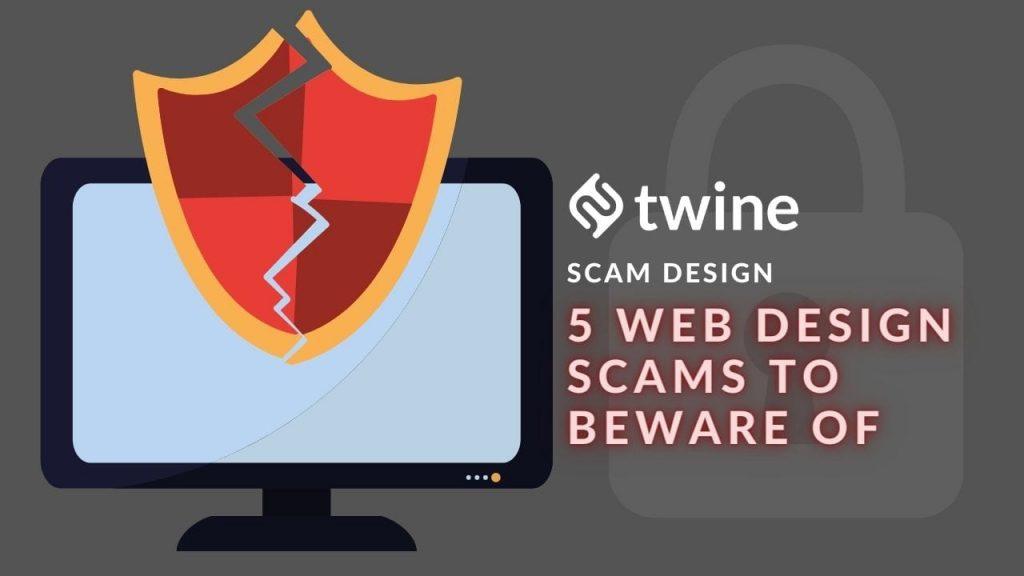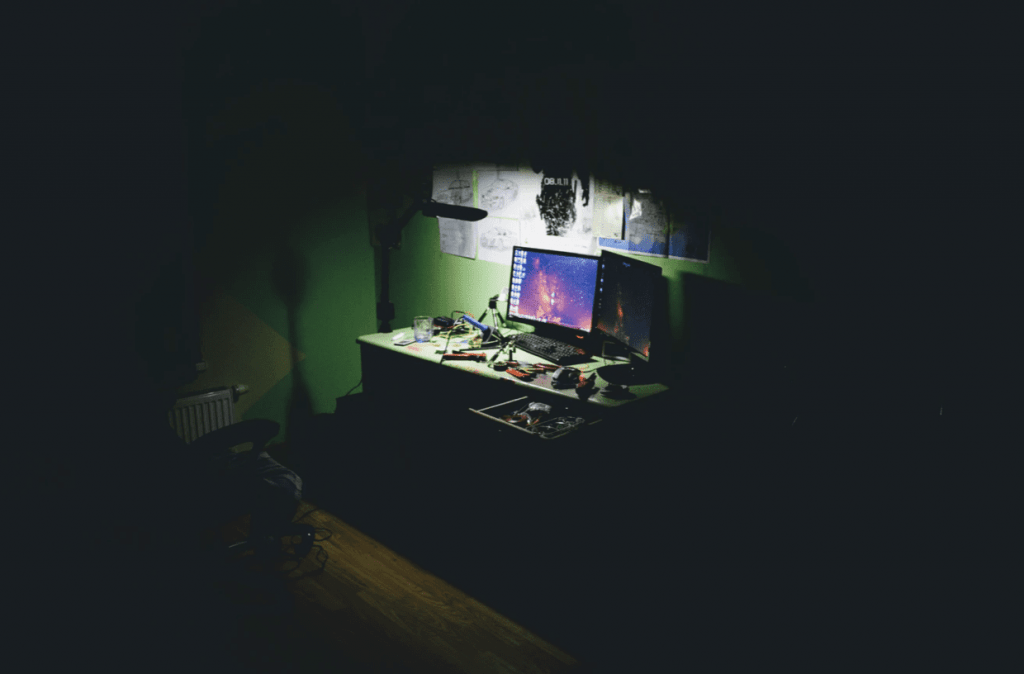
Don’t Be Tricked By Scam Design
Oh, the dreaded scam design. Whenever you hear tales like these, you hope it’s not you that will be on the receiving end. Unfortunately, it’s more common than you think…
If you’re an entrepreneur wanting to set up an online store, having a website is like having the lifeblood of your business online. Your website is where you showcase your products or services, and subsequently, where you will receive payment.
Of course, it’s not just business owners who have websites – anyone that has something to share with an online audience can have one; and if you’re looking to outsource for your next big online project, there is no shortage of web design freelancers.
Due to the sheer demand for websites by aspiring and established online entrepreneurs, website design is a rapidly growing profession. But not just for your talented freelancer, oh no, sometimes the bad guys get involved.
Without further ado, we’re going to be looking at some of the more common web design scams, and help you avoid them for good.
5 Most Common Web Design Scams

Online scammers have been working on their scam design and have been on the increase since the advent of the internet. To avoid being scammed in this manner, you need to be aware of the different web design scams.
Hiring a shady or inexperienced developer can be extremely detrimental to your business. Unfortunately, such people are out there, and differentiating between a scam artist and a genuine web designer can be hard.
These web design scams come in various forms, using different ways to perpetuate their fraud. The following are a few scenarios you should be wary of as somebody looking to outsource…
1. You can’t access the back-end

This is a common website design scam that most unwary businesses fall prey to. In such a scenario, the scammer will send you a design that you like and agree to, after which you release payment.
The only problem is that you cannot access the back-end, rendering the website virtually inaccessible to you.
If you ask for the login details for the website, the scammer will tell you to pay a fee to get the information. You end up realizing that making changes to a website you paid for could cost you more money.
So it’s important to stay on the lookout for such a scam. Consider carrying out sufficient research before enlisting the help of a web designer. If you’re hiring an individual for the job, you can perform an email address lookup to verify their identity and that they are genuine.
2. The designer asks for a large payment upfront to secure the work

It isn’t uncommon to ask for a deposit, or down payment upfront before delivering some work. Unfortunately, all industries have scammers who try to abuse this – taking clients money and disappearing, never to be seen again.
This is another common scam design, involving the designer asking for a huge sum of money as upfront payment for them to start working. If a web designer asks for more than one-third of the design cost before work begins, you should really be asking questions.
Typical arrangements are usually one-third upfront, one-third when the client is satisfied that the work being done is what they really wanted, and the final third when the project is finished. So, always beware of “designers” who ask for a large upfront payment.
3. You don’t get what you paid for

When you pay for a job to be done, you expect it to be done exactly to your specifications. Unfortunately, when it comes to your classic web design scams, this isn’t the case.
You may come across a skilled designer who impresses you, for instance, and you end up hiring them on the spot. But, once the website is delivered to you, you realize that it’s completely different from what you paid for and were expecting.
If you think about it, there is a lot that goes into web designing, as this entails a process of planning all the elements that will go into your website. A web designer’s job is everything from the structure to the layout, graphics, fonts, colors, content creation, SEO, interface design, user experience design – the list is nearly limitless!
With all of these intricacies, it’s easy to end up with an end product that you are not satisfied with. It’s also easy to see how important it is to work with a genuine professional who can act on agreed-upon specifications.
4. Your website just doesn’t work

When looking to build a website, you’d typically scour the internet for a skilled web designer who can actualize your vision. With so many incredible website designs around, you may want to recruit just anyone that promises to give you the website of your dreams.
Don’t do it!
There are fraudulent scammers who work by delivering a poorly functioning website, or even one that simply doesn’t work. What’s worse is that the scammer will say that you didn’t ask for things you thought were included – like a functioning mouse…
This is why it’s vital you have a clear picture of what you are looking for before deciding who to hire. If you proceed to ask that the website be fixed, the scammer will ask you to pay more so that they can rectify things – spoiler alert: if you give them more money, they won’t be fixing your website anytime soon. Try, running for the hills with your money in their pocket instead.
5. You find that you’re constantly being hacked

If you have had web design work done for you and realize that you are constantly being hacked, this may point to something sinister. The chances are that the “expert” you hired was actually a scammer, who’s made your website a host for dangerous activity.
Once you agree to your site being hosted by this counterfeit web designer, (usually cheap hosting, we should add), you realize there were several inexplicable hacks made to your website. Most likely, the scammer filled the site with malware or malicious code embedded into your site’s files. This will then cost you greatly, for each and every hack to get restored.
Other than wasting time and money, this can have a detrimental effect on your business. For example, customers may begin to fall away after no longer deeming your site trustworthy (ouch).
This can all be avoided, however! The following tips are guided to ensure you’re not falling into these deadly scam design traps – take notes!
Tips on How to Spot a Scammer and Avoid Web Design Scams

1. Review your contract/agreement
One way of avoiding a website design scam is to ensure that there is a clause in the initial contract or agreement that states that you will have administrative access to your site. In particular, you should insist on having access to the cPanel, giving you full access to the website at any time.
Having this in writing will ensure the scammer isn’t able to pull the wool over your eyes – checkmate.
2. Perform an email address lookup to find out more about the email owner
Most people make the mistake of going for the first web designer they meet, without doing proper research. No matter where you are, chances are that there is a fairly high number of web designers, so you shouldn’t make do.
The most important thing to consider when hiring your web designer, is that they are 100% the person they claim to be.
One way of making sure you don’t fall for a web design scam, is by conducting an email address lookup of the web designer you are looking to hire. Doing this will tell you all you need to know about a certain email, and help verify whether the person you are talking to is actually genuine.
3. Use a site that vets freelancers to ensure safety

One way of ensuring safety against web design scams is to use a site like Twine that vets all of their freelance web designers.
Freelance vetting means looking further than the resume and portfolios. Testimonials are also available to view, so you can see how successful the freelancer was with past clients. Ultimately, this will tell you if you can trust the web designer to deliver the work you need to be done.
If using a freelance platform like Twine, you can be reassured knowing that their team has done the hard part for you – browse their range of over 12,000 web designers, take your pick, and be satisfied knowing there are no web design scams on the horizon! Score!
4. Ask for the name of the web hosting service the designer is using
You should be extremely careful of web designers who charge an incredibly low amount for their work. You may actually end up spending more than what you would have if you had hired an averagely priced web designer!
Scammers offer cheap hosting because it’s usually on shared servers that have minimal security – which is why they charge you less for your website design. Often, these shared servers aren’t even in the States, and are therefore not in the jurisdiction of the country.
One way of avoiding a scam design is to ask for the host’s name and check out their reputation. If you find that after your research, things are looking a bit sketchy, maybe leave before you experience any losses. When it comes to dealing with website design scammers, you’re better safe than sorry.
Concluding Remarks
If you need a website to do business, or fulfil a certain vision, you may find the thought of hiring a genuine web designer a complete minefield. However, don’t let the prospect of getting scammed deter you – there are many trustworthy and talented people out there.
Sadly, there will always be people looking to take advantage to make a quick buck. If you want to avoid getting scammed, be thorough in your research before hiring anyone and follow the tips in this guide!
Ready to hire? Our marketplace of over 410,000 freelancers have the skills and expertise needed to skyrocket your business to the next level. From marketers to designers, copywriters to SEO experts – browse the talented bunch here!



